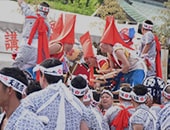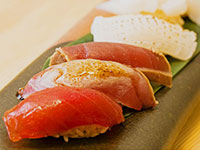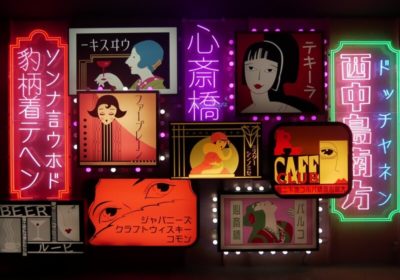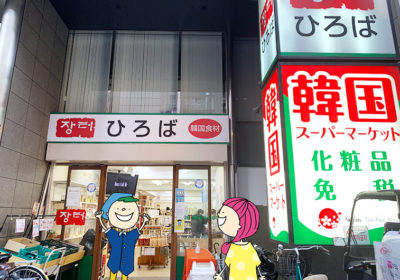

Osaka Bob FAMILY
Swoon over romantic art by Alphonse Mucha
Maido! Kim here!
Are you familiar with Alphonse Mucha? His artwork, including oil paintings, sketches, and jewelry are fascinatingly brilliant. And here is your chance to experience the breadth of his works, up-close.
Let’s take a look at some of the exhibits at Sakai Alphonse Mucha Museum with the help of the museum curator.
[Contents]
■A rise to fame in Paris, Gismonda!
Secrets of Mucha’s Style is on special exhibit thru Sunday, April 3. The exhibit features Mucha’s signature style for posters. This particular piece is of special importance—the poster for Gismonda!

Mucha’s first poster design, Gismonda!
The legendary Parisian actress Sarah Bernhardt praised him for the detail in his sketches, the originality of his design, and his tasteful use of color. The poster hit the streets of Paris on January 1, 1895 and was met with immediate acclaim. Bernhardt contracted Mucha to design her stage posters and also employed him in designing jewelry pieces.
The life-sized Gismonda poster pictures Berhardt holding a date palm leaf at eye level that partially obscures the actresses name where it is written in an arch in the background. The ornate motif and placement of the letters indicates an awareness of how a viewers eyes will perceive the image.
This technique is seen in succession in Mucha’s posters and became known as the Mucha Style around the turn of the twentieth century.
■ Mucha Poster exhibit
Here are some of the artworks you will be able to see at the special exhibit…

▲Ruinart champagne
This lithograph features the world’s oldest established champagne brand, Ruinart. From its inception Ruinart was involved in the arts and commissioned an advertising poster from Mucha in 1896. (Incidentally, Ruinart is still involved in the arts and contributes to over 30 art fairs around the world.)
Similar to elements seen in Gismonda, the poster is a vertical portrait of a woman holding a champagne glass in her left hand. One’s eyes are drawn to champagne bubbles emerging from her drink and the woman’s locks are so voluminous they run into the lettering. Her image communicates the product so well to viewers.

▲Trappistine
This woman, robed in white, holds what appear to be the medicinal herbs in her right hand and she touches a liquor bottle with her left. This larger than life woman stands in front of a circular motif, similar to the composition seen in the Gismonda poster. Immediately your eyes are drawn to the ornately decorated upper part of the poster and follow the straight lock of hair directly to the lower right side where the liquor bottle sits. The advertisement doesn’t aggressively confront you with the product, but rather gently guides your eyes towards it naturally. You can see how Mucha thought deeply about the visual impact when he designed these posters.
You can see his sketches on display as well.

Beneath the woman’s clothes, her physical form has a clear shape. Even in this early sketch is very elegant and detailed.
The exhibit includes a number of Mucha’s beloved designs including posters designed for Job and French perfume Rodo.
Most of the exhibits focus on this classic Mucha poster style and include a number of sketches and a collection of Art Nouveau ornaments. The exhibit is a fantastic introduction to Mucha’s work and I can’t wait to go see it in person!
■ Looking for art in Osaka/Kansai? Look no further!
There are also themed exhibits happening for a limited time. Why not explore the roots of Mucha’s style as a Slavic person with Czech heritage or through Christianity?
“Christmas drawn by Mucha” …… Saturday, November 20–Sunday, January 30, 2022
“Mucha and Slavic folk designs” …… Thursday, February 3–Sunday, April 3, 2022
Focusing on Christmas and Easter motifs and folk costumes from Mucha’s works, this exhibit will be combined with the Japan Toy Museum’s World Christmas Collection and Easter Egg Collection exhibit. Don’t miss this chance to see how regional differences are manifest in a variety of festivals and celebrations in different parts of the world.
If you’re looking for an art exhibit, a nice date spot, or just a fun afternoon outing, I highly recommend the Sakai Alphonse Mucha Museum.
It’s connected to JR Sakai Station via a pedestrian passage. It’s covered too, so you won’t even get wet if it’s raining!
Enjoy the exhibits!
There are also themed exhibits happening for a limited time. Why not explore the roots of Mucha’s style as a Slavic person with Czech heritage or through Christianity?
“Christmas drawn by Mucha” …… Saturday, November 20–Sunday, January 30, 2022
“Mucha and Slavic folk designs” …… Thursday, February 3–Sunday, April 3, 2022
Focusing on Christmas and Easter motifs and folk costumes from Mucha’s works, this exhibit will be combined with the Japan Toy Museum’s World Christmas Collection and Easter Egg Collection exhibit. Don’t miss this chance to see how regional differences are manifest in a variety of festivals and celebrations in different parts of the world.
If you’re looking for an art exhibit, a nice date spot, or just a fun afternoon outing, I highly recommend the Sakai Alphonse Mucha Museum.
It’s connected to JR Sakai Station via a pedestrian passage. It’s covered too, so you won’t even get wet if it’s raining!
Enjoy the exhibits!
■The carpet project!
The carpet project!
Finally, I’d like to leave you with one more fun detail.
The Sakai Alphonse Mucha Museum is currently in the middle of a crowdfunding project to turn a Mucha’s painting into a tapestry, one of Sakai’s traditional crafts.

The piece that will be turned into a tapestry is Quo Vadis. The massive oil painting is over 2 meters wide. The subject is the Polish novel of the same name and this romantic painting was done by Mucha when he was 44 years old. The central figure is a young woman named Eunice employed as a slave in an aristocratic household in ancient Rome. The scene shows her putting her lips to a marble statue of Petronius and you can see there is a man in the background. As the novel does not include a male presence during this scene, many believe that it is a self-portrait of Mucha himself. But the man’s true identity is still a mystery.
There was actually a plan to turn this piece into a tapestry around 1910, but it never came to fruiting. And for approximately 40 years the piece itself was missing.
The art of tapestry making has been a tradition in Sakai since the early nineteenth century. The handwoven techniques employed in making Sakai Carpets (Sakai Dantsu) have stood the test of time and were even exported to the West around the turn of the twentieth century.
The incomplete project of turning Quo Vadis into a tapestry some 110 years ago, will hopefully be completed using the traditional techniques used to make Sakai Carpet. The project has already raised 1.5 million yen. In order to preserve the tapestry in its best condition for future generations, the project is aiming for another 3 million yen in crowdfunding. If you are interested in contributing to the project, please follow this link.
https://readyfor.jp/projects/mucha-sakaidantsu
Donations will be accepted until 11pm (JST) Friday, December 24.
The finished tapestry is expected to be displayed at a special exhibit in December 2023.
▼If you liked this article, read more
 Art museum in the sky!
Art museum in the sky!Koji Kinutani Tenku Art Museum curator Akeo Takahashi introduces the art and the artist

Osaka Bob FAMILY
The contents of this page were current at the time it was posted, but may differ from the present.
Text visible in this map is based on information from Map Tiler and may differ from actual geographical names.














































